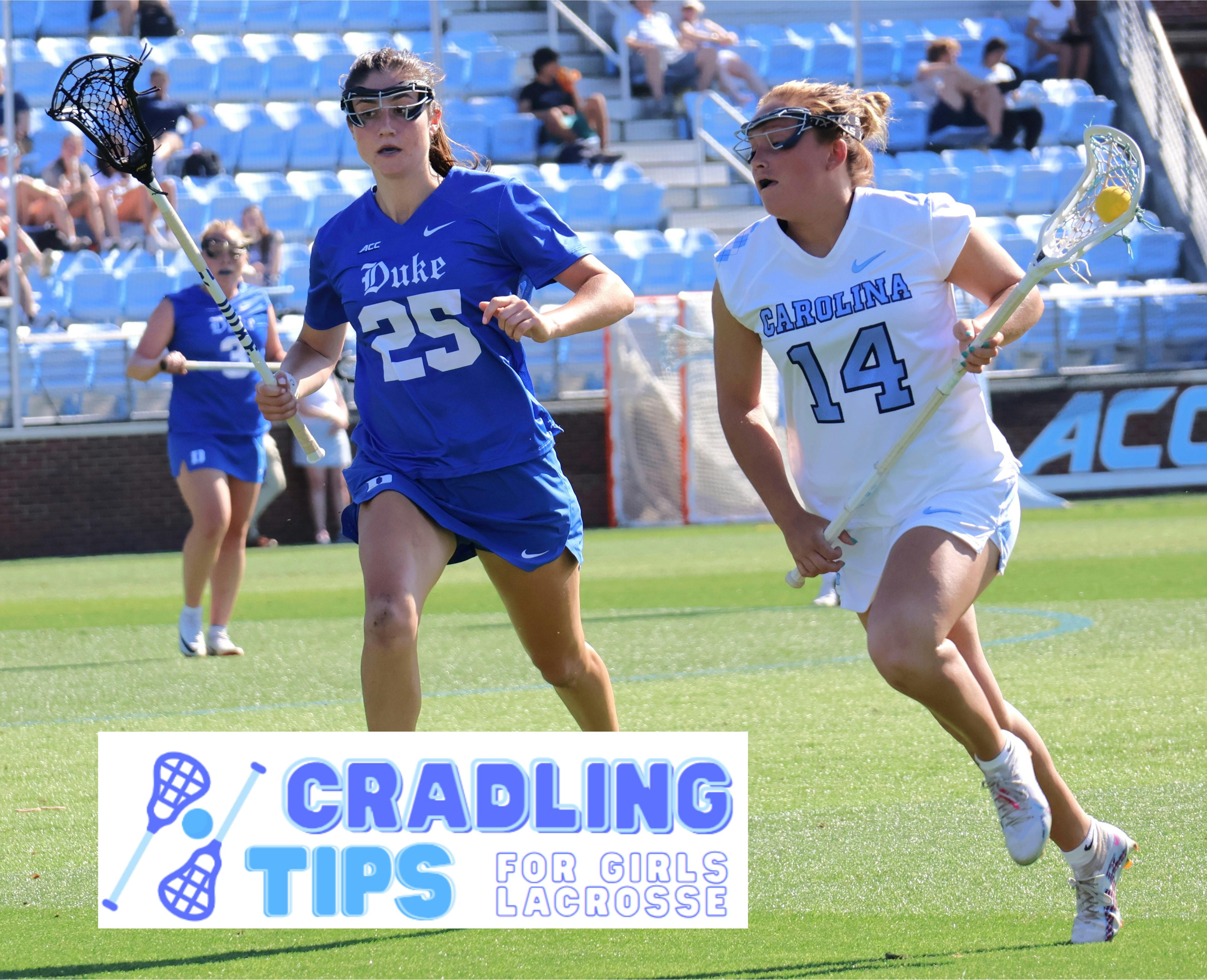Featured courses
- Where Legends Train: Why Wall Ball Matters in Lacrosse by Avery Hixson
- From Beginner to Game-Changer: Cradling Tips for Girls’ Lacrosse by Avery Hixson
- Elite Women’s Lacrosse Shooting Tactics by Avery Hixson

From Beginner to Game-Changer: Cradling Tips for Girls’ Lacrosse
- By Avery Hixson
When coaching girls lacrosse, it is crucial to understand that confidence on the lacrosse field starts with mastering the basics—and cradling is one of the most essential. It’s not just about keeping the ball in the stick; it’s about giving young players the control, rhythm, and poise they need to move with purpose. A strong cradle allows athletes to protect the ball under pressure, transition smoothly, and set up every play with confidence.
The right mix of instruction, repetition, and encouragement can turn hesitant hands into high-impact players. These practical tips and easy-to-teach strategies work for any kind of young player. Give your team the tools they need to develop, compete with confidence, and truly enjoy the game.
All lacrosse players know that solid stick skills set a great player apart from a decent player. Sheehan Stanwick Burch, a four-time All American women's lacrosse player and US Lacrosse Hall of Famer specializes in taking decent players and making them into great players. Burch has mastered teaching new players how to cradle with a few simple points and reminders that she covers in her course, Girls Lacrosse Drills & Tips Video Library, as well as many other key lacrosse concepts. Anybody can learn to cradle effectively, so let's dive in!
Tips to Know
Before picking up the stick and just going for it, it’s important to have some rules to reference. To cradle, you must know how to hold the stick, placement of the stick, and the motion of the cradle.
Hand Placement
Your dominant hand should be about two thirds up the stick, wherever it feels most comfortable to hold, with a strong grip. Your nondominant hand should be at the very bottom of the stick, also known as the butt of the stick, lightly holding the stick in place. Your bottom hand shouldn’t be doing much of the work, it is “just a guide.”
Position of the Stick
Coach Burch describes that the stick should be tilted enough to balance the ball upright, but not so tilted that it has the chance to roll out the back. The starting position of the cradle should be tilted on your dominant side shoulder. You should “always be a threat to score,” meaning your stick position should be comfortable and versatile enough to pass or shoot.
Motion of the Cradle
The motion of the cradling itself should be “very quick, and very tight.” Simplicity is key when it comes to an effective cradle, it is important to be able to make quick decisions while cradling, like passing, shooting, dodging, or even faking.
How and Where to Cradle

Once the process is understood, it’s time to cradle! The cradle should be between your shoulder and your ear. This means that the full range of motion that the cradle covers shouldn’t go any farther away from your body than your shoulder. The cradle should begin with the stick out at your shoulder, then quickly curls in towards your ear, then repeat. This ensures that the ball is protected from other players. This position also maintains the “threat to score” ability. This simple, short-range cradle saves time and energy compared to wider, more dramatic or advanced cradling methods.
Cradle with Either Hand

The next step after learning to cradle is to be able to do so with both hands. Coach Rachel Lenzo covers how to do this in her course, Catching, Shooting & Dodging for Girls Lacrosse. Here’s how she describes it.
To learn to switch hands, you should begin in the “triple threat position,” similar to what Coach Burch describes as being a “threat to score.” If you are switching from your right hand to your left hand, you first need to bring your bottom hand to your left side. Then, you lower your stick to your bottom hand, and switch hand positions to a left-dominant position. Coach Benzo clarifies that at no point in this switch should you only have one hand on the stick, it should be both at all times. She emphasizes the two most important steps: cross over your body, and switch your hands. Being able to cradle with both hands and protect the stick is a surefire way to become a better player.
